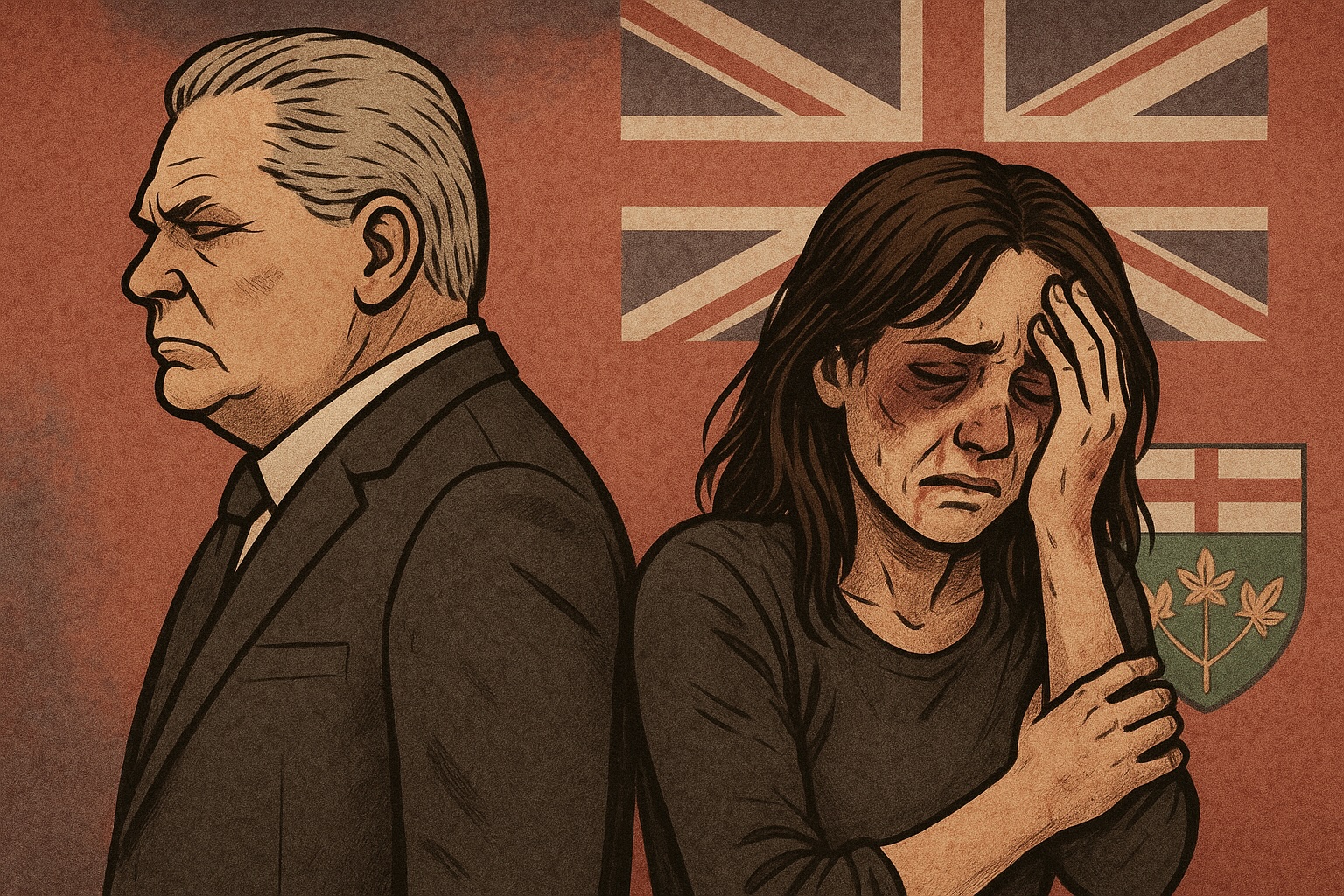Ontario Refuses to Declare Intimate Partner Violence an Epidemic — Why It Matters
On June 6, 2025, Ontario refused to declare intimate partner violence an epidemic despite growing calls from survivors, advocates, and over 95 municipalities. Learn why symbolic recognition matters and what this means for the future of gender-based violence prevention.

On June 6, 2025, Ontario’s provincial government once again refused a unanimous consent motion to declare intimate partner violence (IPV) an epidemic. The decision has sparked public outrage and intensified pressure from survivors, municipalities, and advocacy groups demanding stronger recognition of the crisis.
With IPV rates rising and municipalities across the province stepping up, Ontario’s refusal highlights a growing divide between grassroots advocacy and provincial leadership.
The Motion at Queen’s Park
Proposed by opposition members, the motion called for Ontario to officially recognize IPV as an epidemic.
The recognition would have aligned with the 2022 Renfrew County Inquest recommendations, which urged governments to acknowledge IPV as a systemic crisis.
Government members blocked the motion, pointing to existing funding and programs as sufficient.
Backlash and Advocacy Response
The government’s decision was met with immediate backlash:
Advocacy groups called the refusal a betrayal of survivors.
Families of femicide victims joined survivors in protests at Queen’s Park.
More than 95 municipalities, including Toronto, Ottawa, and Sudbury, have already declared IPV an epidemic — further fueling criticism of the province’s inaction.
Ontario Government’s Position
Provincial officials argue that:
Ontario is investing $1.4 billion over four years into gender-based violence and victim services.
Declaring an epidemic is purely symbolic and does not directly change policy outcomes.
Why Symbolism Still Matters
Advocates strongly disagree with the province’s stance. They stress that symbolic recognition carries real impact by:
Driving urgency in policymaking.
Helping secure federal funding partnerships.
Breaking stigma by validating survivors’ experiences and raising awareness.
The Bigger Picture
While funding and programs are vital, advocates argue that words and recognition matter too. Symbolically declaring IPV an epidemic would not only align Ontario with municipal leaders but also send a powerful message: that the province is committed to addressing the root causes and systemic failures that perpetuate violence.
By refusing recognition, Ontario risks alienating survivors and reinforcing the divide between government promises and lived realities.
FAQs About Ontario’s Refusal to Declare IPV an Epidemic
Q: What happened on June 6, 2025, at Queen’s Park?
A: The Ontario government blocked a unanimous consent motion to declare IPV an epidemic.
Q: Why do advocates want IPV declared an epidemic?
A: To increase urgency, strengthen access to federal funding, and publicly validate the experiences of survivors.
Q: How much has Ontario pledged toward gender-based violence prevention?
A: The province announced $1.4 billion over four years.
Q: Which municipalities have declared IPV an epidemic?
A: Over 95 municipalities, including Ottawa, Sudbury, and Toronto.
Q: Does declaring an epidemic change policy?
A: Not directly, but it creates public accountability and pressures governments to act.
